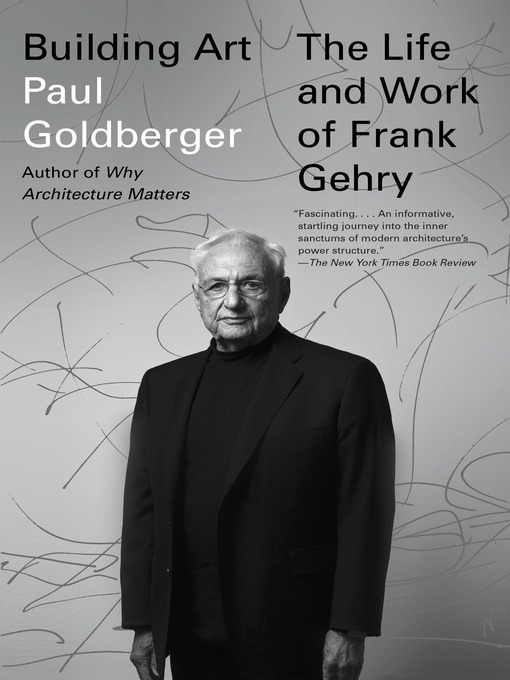From Pulitzer Prize–winning architectural critic Paul Goldberger: an engaging, nuanced exploration of the life and work of Frank Gehry, undoubtedly the most famous architect of our time. This first full-fledged critical biography presents and evaluates the work of a man who has almost single-handedly transformed contemporary architecture in his innovative use of materials, design, and form, and who is among the very few architects in history to be both respected by critics as a creative, cutting-edge force and embraced by the general public as a popular figure.
Building Art shows the full range of Gehry’s work, from early houses constructed of plywood and chain-link fencing to lamps made in the shape of fish to the triumphant success of such late projects as the spectacular art museum of glass in Paris. It tells the story behind Gehry’s own house, which upset his neighbors and excited the world with its mix of the traditional and the extraordinary, and recounts how Gehry came to design the Guggenheim Museum in Bilbao, Spain, his remarkable structure of swirling titanium that changed a declining city into a destination spot. Building Art also explains Gehry’s sixteen-year quest to complete Walt Disney Concert Hall, the beautiful, acoustically brilliant home of the Los Angeles Philharmonic.
Although Gehry’s architecture has been written about widely, the story of his life has never been told in full detail. Here we come to know his Jewish immigrant family, his working-class Toronto childhood, his hours spent playing with blocks on his grandmother’s kitchen floor, his move to Los Angeles when he was still a teenager, and how he came, unexpectedly, to end up in architecture school. Most important, Building Art presents and evaluates Gehry’s lifetime of work in conjunction with his entire life story, including his time in the army and at Harvard, his long relationship with his psychiatrist and the impact it had on his work, and his two marriages and four children. It analyzes his carefully crafted persona, in which a casual, amiable “aw, shucks” surface masks a driving and intense ambition. And it explores his relationship to Los Angeles and how its position as home to outsider artists gave him the freedom in his formative years to make the innovations that characterize his genius. Finally, it discusses his interest in using technology not just to change the way a building looks but to change the way the whole profession of architecture is practiced.
At once a sweeping view of a great architect and an intimate look at creative genius, Building Art is in many ways the saga of the architectural milieu of the twenty-first century. But most of all it is the compelling story of the man who first comes to mind when we think of the lasting possibilities of buildings as art.
- Available now!
- New eBook additions
- New kids additions
- New teen additions
- Most popular
- Always Available eBooks
- See all ebooks collections
- Available now
- AZ's Most Popular Audiobooks
- New Audiobooks
- Always Available Audiobooks
- New kids additions
- New teen additions
- Try something different
- Extremely Funny Audiobooks
- See all audiobooks collections




